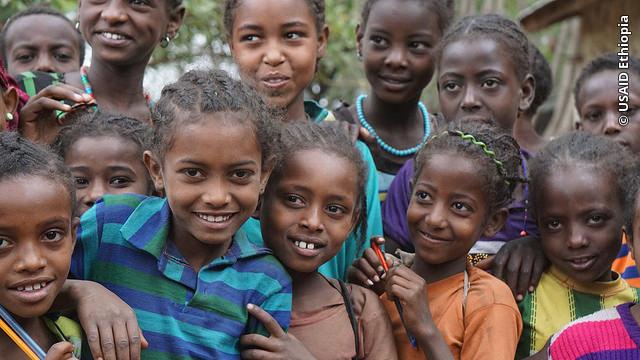#PEPFAR15: 15 Years of Saving Lives through American Generosity and Partnerships
Cross-posted from U.S. Department of State
February 6, 2018

Under the leadership of President Donald Trump, and thanks to the generosity of the American people, 13 high-HIV-burden countries are now poised to achieve epidemic control by 2020. As outlined in the U.S. President’s Emergency Plan for AIDS Relief’s (PEPFAR) Strategy for Accelerating HIV/AIDS Epidemic Control (2017-2020) [PDF, 2.85 MB] launched by Secretary of State Rex Tillerson, these efforts will create the roadmap to reach epidemic control in the more than 50 countries that PEPFAR supports.
Fifteen years ago, an HIV diagnosis was tantamount to a death sentence in many countries, and entire families and communities were falling ill. Gains in global health and development were being lost. In the hardest-hit regions of sub-Saharan Africa, infant mortality doubled, child mortality tripled, and life expectancy dropped by 20 years. In some southern African countries, one-in-three adults were living with HIV and millions of orphans had been left behind.
Faced with this death and devastation, the United States government responded, resoundingly. On Jan. 28, 2003, President George W. Bush sent ripples of compassion and hope around the world by announcing “a work of mercy beyond all current international efforts to help the people of Africa” in his State of the Union address – namely, PEPFAR. The U.S. Congress acted swiftly, passing bipartisan legislation that authorized PEPFAR fewer than four months after this historic announcement.
As we mark #PEPFAR15, with continued strong bipartisan support across three administrations and from the Congress, the U.S. government has not only saved and improved millions of lives, but also transformed the global HIV/AIDS response, moving it from crisis toward control. Death and despair have been overwhelmingly replaced with hope and life. We have not done this alone, but partnered closely with foreign governments, the private sector, philanthropic organizations, multilateral institutions, civil society and faith-based organizations, people living with HIV, and many others.
When PEPFAR began, only 50,000 people in Africa were on lifesaving HIV treatment. PEPFAR now supports treatment for more than 13.3 million people globally. We have enabled more than 2.2 million babies to be born HIV free to HIV-positive women. And we provide assistance to more than 6.4 million orphans, vulnerable children, and their caregivers.
These results [PDF, 363 KB] reflect the impact of PEPFAR’s transparent, accountable, and cost-effective investments, which are made possible by the tremendous compassion of the American people. Our bilateral resources also work hand-in-hand with those from the Global Fund to Fight AIDS, Tuberculosis and Malaria – to which the U.S. government is the largest donor – and from partner countries themselves.
We are proud that PEPFAR is widely regarded as one of the most effective and efficient U.S. foreign assistance programs. By using the latest data and science, we ensure that each dollar with which we are entrusted has the greatest possible impact. And by focusing our efforts on where the epidemic is the largest and the need is the highest, we are not only hastening progress toward ending the epidemic, but reducing the future costs required to sustain the HIV/AIDS response.
As we celebrate #PEPFAR15, we are also firmly focused on the future, on making what once seemed impossible possible. For the first time in modern history, we have the opportunity to control a pandemic without a vaccine or a cure, and lay the groundwork for eventually eliminating or eradicating HIV. Thanks to the American people and American leadership, we are closer than ever to ending AIDS as a public health threat around the world.